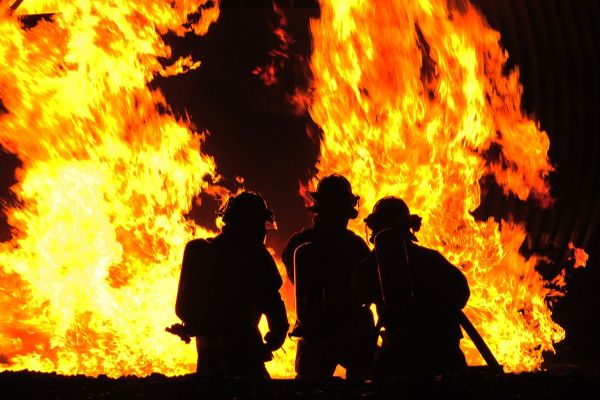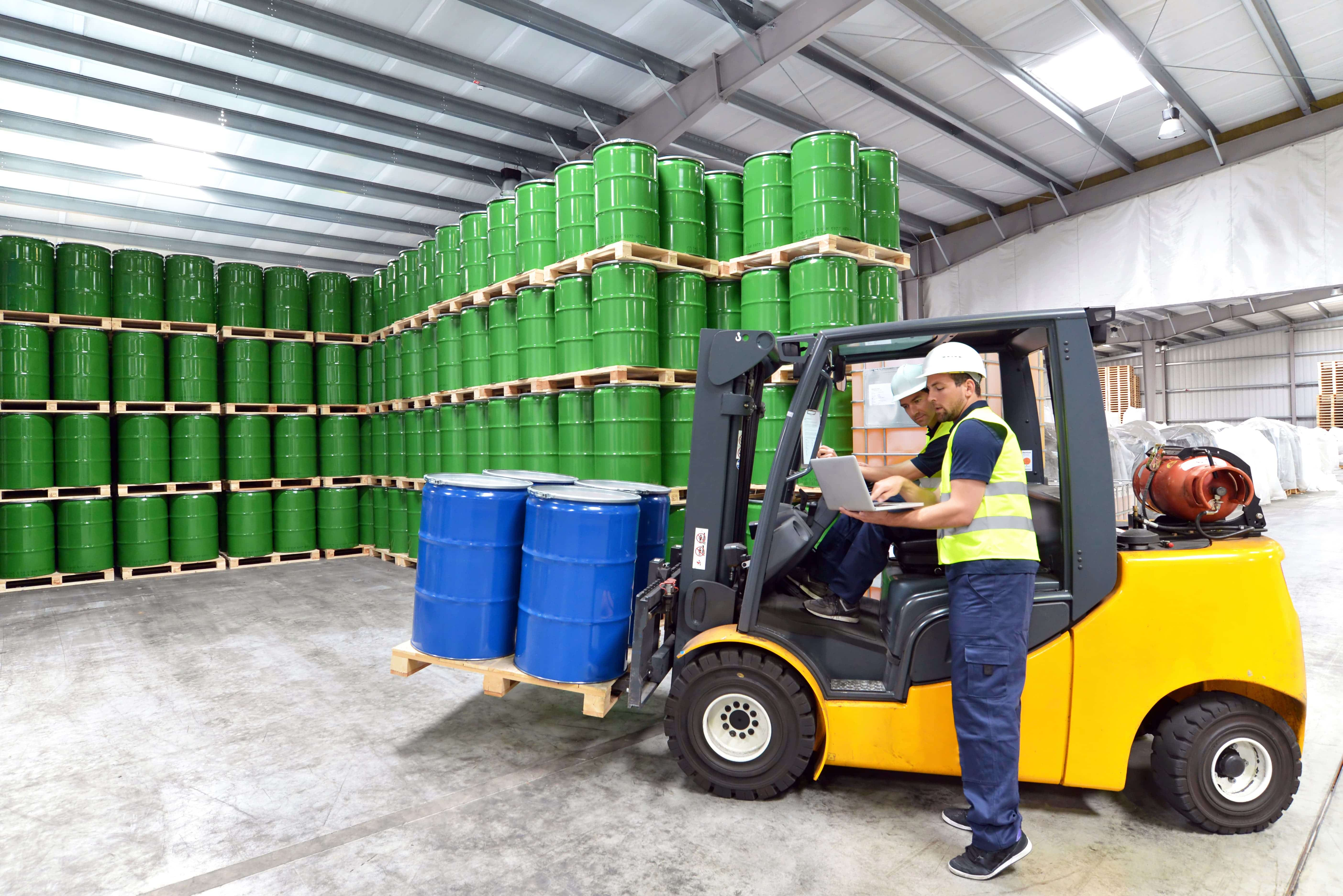Flammable liquids fires are fierce, fast-burning and notoriously difficult to contain. Once the fire reaches a certain temperature, it can lead to further hazards such as explosions and the emission of toxic smoke. The thought of addressing all those hazards can be quite overwhelming, so this blog is dedicated to breaking down the risk management process into four easy steps. We’ll show you how to apply the principles of chemical risk management to the fire hazards that are associated with the use and storage of flammable liquids.
How Does A Risk Management Methodology Work?
The first step in preventing flammable liquids from causing a fire at your workplace is to gain an understanding of the hazardous properties of the chemicals. By understanding these chemical properties, you can then determine what causes them to ignite, burn and explode.
After that step, you’ll then have to assess the likelihood of a fire or explosion occurring. Giving priority to the areas that present the biggest risk, you can then introduce preventative measures to reduce the likelihood of a fire or explosion incident.
Here at STOREMASTA, we use a 4-step risk management methodology to systemise this process and ensure that all hazards are identified and dealt with.

Risk management can reduce the risks associated with the handling and storage of Class 3 Flammable Liquids.
Here’s how our risk management methodology works:
- STEP 1 Identify. Physically identify the fire hazards associated with the chemicals, and how each hazard could play out at the workplace.
- STEP 2 Assess. Now assess the magnitude of a potential incident, and the likelihood of it occurring.
- STEP 3 Control. Using the Hierarchy of Controls, look for ways to either eliminate (ideally) or minimise the risks and hazards.
- STEP 4 Sustain. Review the hazard controls you introduced in Step 3, and ensure they are all working properly. At the same time, introduce auditing systems to check for emerging hazards and system failures.
Our risk management methodology can be applied to a range of chemical hazards in the workplace, including:
- Single hazards – such as fires, explosions, asphyxiation, health hazards, environmental hazards
- The hazards associated with dangerous goods – incompatibility with other substances, the ability to ignite in the presence of an ignition source
- Specific work areas – such as warehouses, loading docks, workshops, offices
How Can You Apply The Risk Management Methodology?
To demonstrate how the methodology works, we’re going to apply it to a simulated fire hazard associated with the chemicals stored in a Class 3 Flammable Liquids cabinet. We’ll walk you through each step of the process in further detail below.
STEP 1 Identify. Referring to Safety Data Sheets, identify the flash point and auto-ignition temperatures of the flammable liquids. Identify potential ignition sources. Identify the chemical quantities, where they are currently kept and how they are used.
Example: Your site keeps enamel paints, solvents, varnish and a portable container of unleaded petrol (mower fuel) in a small flammable liquid’s cabinet. Each of the chemicals is highly flammable and has a flash point indicating they could easily ignite at room temperature.
The cabinet also contains paint brushes, rags and rollers. Sometimes the paint tins aren’t closed properly, and one is missing a lid. The cabinet is inside the maintenance manager’s office, and the top of the cabinet is often used as a shelf for files and cleaning agents. Inside the office is a computer, modem and printer (plugged into a power board), wall mounted air-conditioner (plugged into the wall) and various light switches.
STEP 2 Assess. Based on the information you have gathered in step 1, now assess the likelihood of flammable liquids igniting. If they did ignite, what is the likely impact and damage that would occur.
Example: If the flammable liquids were to ignite the maintenance manager’s office would be quickly destroyed as it is full of combustible items. Workers could be killed or injured, and the entire workshop building threatened. It’s a relatively uncontrolled area, and because of the large number of electrical appliances, power points and combustible items — a very high fire risk.
STEP 3 Control. See if you can find a way to eliminate the fire hazard completely. If that is not possible, work through the Hierarchy of Controls to determine how you could prevent (or reduce the likelihood) of a fire occurring.
Example: You immediately determine that the flammable liquids cabinet cannot remain in the Maintenance Manager’s office. It is too close to ignition sources (electrical appliances, power points and light switches) and there are too many combustible materials stored close by.
You decide on a number of controls to reduce risk:
- Substitute: moving the cabinet to another location in the warehouse. This reduces the overall risk of fire, but the hazard will still exist in the new location.
- Isolate: the cabinet is moved to a quiet area of the warehouse, and has a 10 metre gap between other materials, substances, and equipment.
- Administrate: introducing better housekeeping policies to ensure that lids on paint tins and chemical containers are properly closed, and all combustibles are taken out of the cabinet and transferred to a steel cabinet away from the flammables.
STEP 4 Sustain. Once the control measures have been implemented, you should conduct audits and other systems to check that the risk controls have been installed correctly. You must also schedule inspections of these controls to ensure that they continue to remain safe and effective.
Example: one month after the flammable liquids cabinet has been moved to the warehouse, you conduct a site inspection. Despite the policy not to allow materials within 10 metres of the cabinet, the top of the cabinet is now being used as a shelf for chemical containers. You also see that warehouse staff are overloading the cabinet past capacity. Also, empty pallets are being stacked next to the cabinet.
You flag these issues of non-compliance and introduce weekly inspections followed up by monthly safety audits. Audits are reviewed by a newly appointed Safety Committee who are charged with looking for ways to minimise the amount of flammable liquids kept onsite. Supervisors begin carrying out spot checks in chemical storage areas, and proper storage equipment is purchased for the maintenance manager’s office.
Why Are Reviews and System Checks Important?
While risk assessments may look great on paper, they may not always play out the way you’d like them to. There are many factors which could disrupt or complicate the risk control process during the delivery, installation and adoption of risk control measures by site crews. Keep in mind that the risk management methodology simply won’t work without ongoing reviews and system checks.
While you may have implemented risk control measures such as a compliant flammable liquids cabinet or store, they may not have been installed correctly – thus negating any risk control measures that the cabinet provides.
If your storage areas have been set up correctly, you must ensure that all staff are trained in flammable liquids safety so they can maintain compliance. They’ll need to understand how to reduce the hazards associated with Class 3 Dangerous Goods — such as removing any ignition sources and incompatible substances. They will also have to follow procedures to ensure that they effectively use, restock, organise and clean these flammable cabinets or stores so your organisation can maintain the highest standards of safety.
We’ve seen countless flammable liquids cabinets being used in a non-compliant manner — which puts your business at risk of fire, explosion and human harm. Your scheduled reviews and system checks will ensure that your risk control measures stay effective, safe and applicable for your current requirements.

You must ensure that you select, install and maintain your control measures to achieve chemical compliance in your organisation.
How Can You Prevent Flammable Liquids Fires In Your Organisation?
Class 3 Flammable Liquids are Dangerous Goods that introduce a range of complex fire hazards to a workplace. This blog has outlined a simple example of how you could use a 4-step risk management methodology to prevent the workplace fires that are associated with flammable liquids. But now, it’s your turn.
To protect your people, your business and your community, it’s essential that you understand how to reduce risk in your organisation. To support your own risk assessment, you can download our eBook Essential Considerations When Storing Flammable Liquids Indoors. In this step-by-step guide, we detail the health and fire hazards associated with Class 3 Flammable Liquids and provide instructions for selecting, installing and maintaining a compliant safety cabinet. Download our free guide and read it today by simply clicking on the image below.
Joining the team as a Dangerous Goods Storage Consultant, Melissa Hampton became Storemasta's Marketing Manager in late 2021. With extensive knowledge and experience in chemical compliance, Melissa is responsible for leading the Marketing team and helping shape their marketing strategy. In her spare time, you can find Melissa hiking, swimming and enjoying the great outdoors in beautiful north-west Tasmania.

